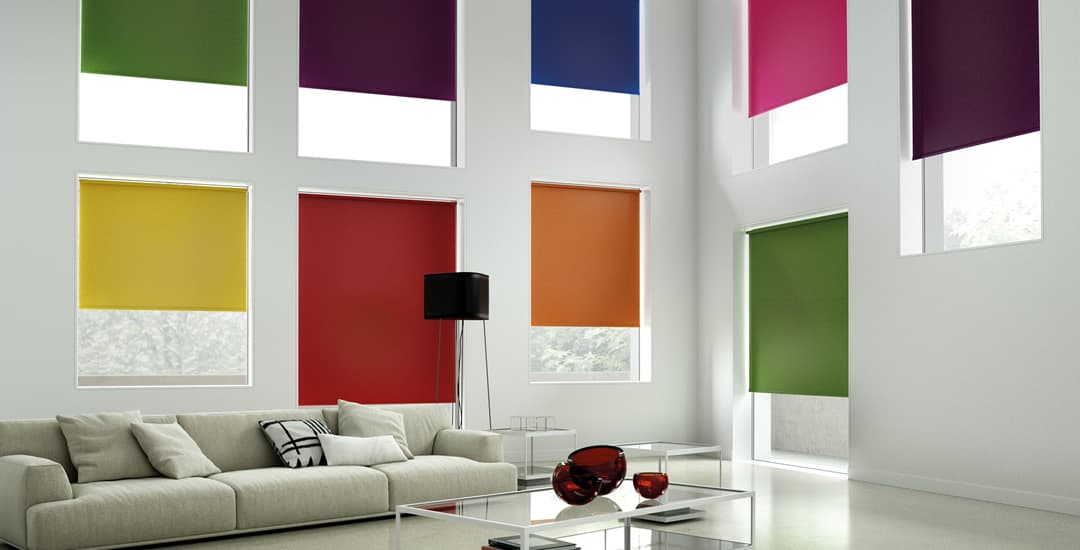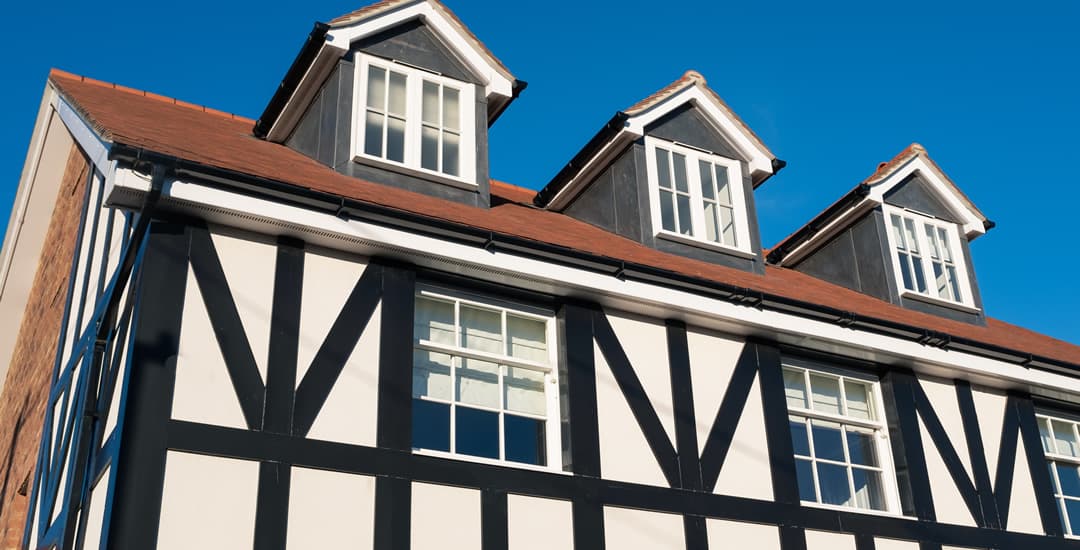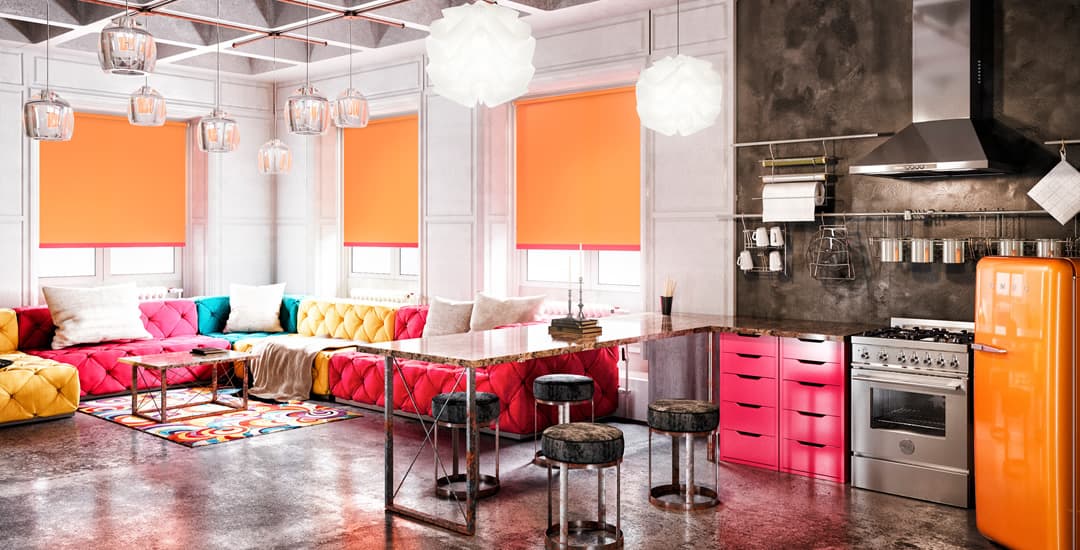
Should all blinds in a house match, or is it ok to have different blinds in different rooms? No, you do not need to match all the blinds in your house, and there’s absolutely no good reason why you should! All blinds in a house matching might actually look a bit odd in some cases – because you’re highly unlikely to have every room in the home decorated and themed in the same way and containing the same sets of coordinating items.
I mean, unless you have pretty much zero imagination, or just arrived on this planet, donned your meatsuit, slept through your induction to humaning, and are still having the odd glitch in your matrix maybe?
A natural follow-on question from there is “should all blinds in a room match,” and the answer to this is a little more obtuse. At the end of the day, it comes down to personal choice; mix and match blinds really pop in some style aesthetics (but not others), which I’ll cover a bit further on.
Some other info that might be handy is if you’re trying to work out if blinds in a dual-purpose room or “two rooms in one” kind of space need to be uniform-looking as well, such as if your kitchen and dining room are all one space, or you have a kitchenette opening onto your lounge.
One other point to bear in mind is that what your blinds look like from inside of the home is not the same as what they look like from the back, or to people looking in (or more to the point, being prevented from doing so thanks to your awesome blinds) so I’ll also look at whether or not your blinds should all match or look the same from outside, and how this could be achieved.
Should all blinds in a house match internally?
No, this is not really a thing; obviously everyone has their own style opinions, but there’s not any received wisdom or widely respected style advice dictating that you need to make all of your home’s blinds match in terms of how they look from inside.
In fact, when it comes to making a style choice rather than one relating to function, it’s weird to use a very binary or dictatorial term like “should.” All blinds in a house match up or almost match up inadvertently sometimes; most commonly in the case of neutrals.
These work in any type of space even if the rest of the décor is very different from room to room; but this is not the same thing as deliberately matching all of your blinds in every room in both type and colour/design because that seems like something you think you’re meant to do!
In many cases, it would actually be more or less impossible to have the same blinds in every room of your home, as different rooms come with different needs and challenges. Functionally, you may not be able to match all of the blinds in your home even if you wanted to.
This issue becomes self-evident when you factor in the need for waterproof blinds in kitchens and bathrooms, and the different ways that different rooms are used; for instance, the potential need for blackout blinds in the bedroom, and blinds to filter light in rooms like the lounge.
Also, style-wise, while there are a great many blinds that are more or less universal in terms of their appearance suiting more or less any room, you’re highly unlikely to be styling every room in your home in the same way. It is completely normal and common to have, say, luxurious Roman blinds in your lounge, waterproof faux-wood blinds in your bathroom, and unicorn patterned blackout roller blinds in your child’s bedroom.
Every room of your home is a different space in terms of its usage and theme or mood. The blinds you choose for each room can be picked accordingly!
Should all blinds in a house match externally?

This is a slightly more complex question. The backs of your blinds, or the parts that face the outside world, all contribute to the overall appearance of your home from outside (and to other people) for better or for worse.
This is known as “kerb appeal” in estate agent circles; and an argument can be made that having your window dressings appearing uniform from outside looks very neat and put together.
With that said, when was the last time you looked at a house or apartment in passing and thought “wow look at those scruffs, they’ve got different colour blinds in every window and there’s even curtains in some of them! Shocking!”
I’m guessing exactly never.
However, if you do like the idea of your blinds all matching in terms of external appearance, this isn’t half as hard to achieve nor as restrictive in choice as matching all of the inside-facing parts of your blinds.
You may not be able to pull it off with 100% effectiveness if you have lots of different types of blinds in play (for instance, vertical blinds will always look different to roller blinds from the outside) but if you have all of your blinds lined in the same colour material, the colour and in some cases, style of the inward-facing sides are irrelevant.
As an example, the blackout lining of roman blinds is usually white or cream in colour, and this is the part of the blind that faces the outside world. Blackout or not then, you might pick linings that look the same for every blind in your home, while giving you plenty of scope for creativity for the family-facing parts of the blinds inside.
With this info in mind though “should” all blinds in a house match externally still isn’t a “yes they should” or “no they should not” thing, it remains a personal choice, and neither choice is considered to be gauche or incorrect.
Should all blinds in a room match?
This is an even more controversial one! Should all blinds in a room match, or can you mix and match blinds in the same room?
While I am not a fan of dictating with a “should” when talking about purely aesthetic style choices rather than functional factors, I will say that it is received wisdom or generally the norm to have all of the blinds in a room matching, in most cases.
Generally, you’d only mix and match blinds in the room if this was planned as a deliberate feature or style choice, and this is not as uncommon as you may think; and can and usually does look really cool.
I suppose the crux of the matter is that if your blinds are all designed to work together in terms of complementing or contrasting with each other even though each blind may be different, it can look funky, interesting, and still cohesive.
Think Monica and Rachel’s apartment in Friends. No two items of furniture matched, but it still looked awesome and hasn’t even really aged poorly to this day; but it was deliberately and effectively executed, rather than thrown together as a result of either necessity or no ****s being given on the part of the stylist.
Do all your window coverings need to match in mixed purpose rooms or open plan spaces?

I’m talking here about things like having a dining room-come-kitchen, a kitchenette within a lounge, a home office workspace in a lounge, or any other fusion kind of deal in which the two separate parts or purposes of the room each have their own window to deal with.
There are two schools of thought here, and they are both equally valid.
The first is that matching all of the blinds within the space looks cohesive and smarter than mixing things up; which might be what you want if you want to play up the perception of the space being one big room, like a kitchen-come-dining room, which are two rooms with related and complementary roles to play.
Also, if you are talking about a kitchen combo with another area of use, you might want to think about matching the blinds in both parts to ensure all of the blinds are waterproof, if the humidity from the kitchen side of things is likely to reach the blinds in the other area.
The second school of thought is that choosing different blinds for each of the two parts or purposes of the room helps to define and separate the spaces, which might be what you want in some other situations.
For instance, if your home office is in the lounge, having a marked difference in terms of décor between the two areas can help you to mentally separate your working role from your downtime conducted just a few feet away, which can be very valuable. This may make it easier for you to switch off when you have finished at your desk, and view the chill out space of the rest of the room in the right light.




